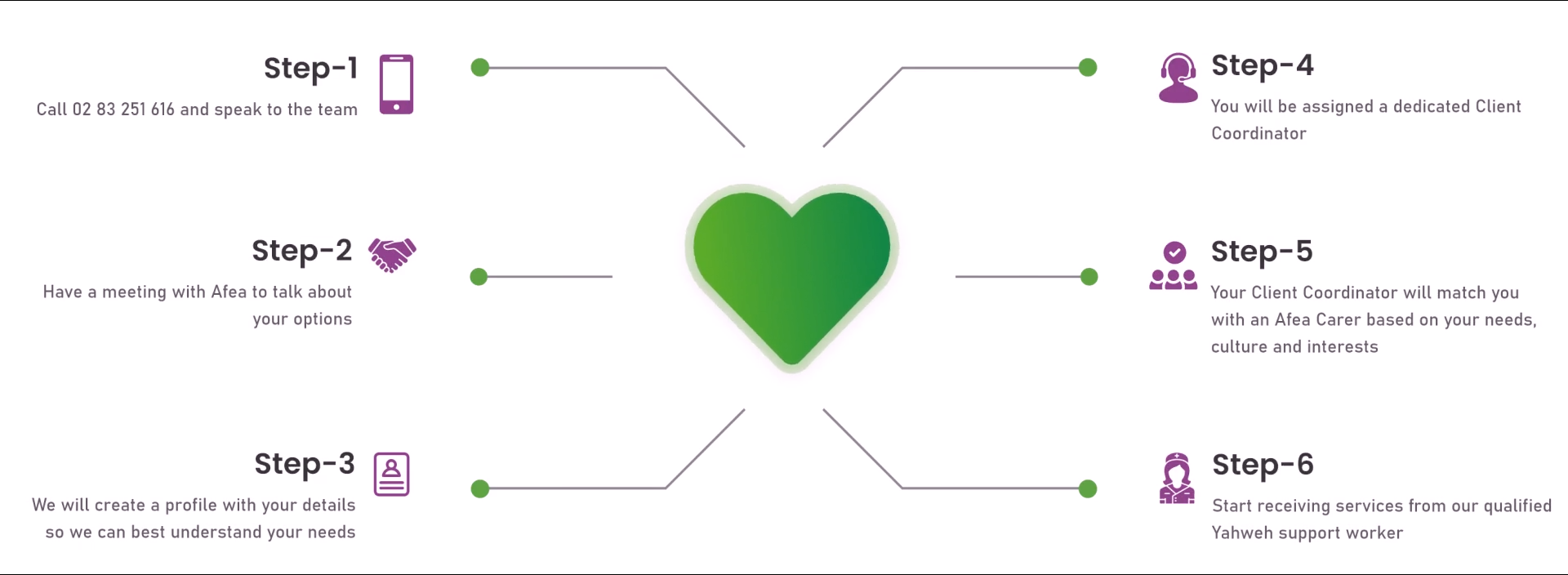SWITCH TO YAHWEH CARE
Providing care and holistic approach to NDIS participants aiming to create opportunities for you to live your best life.
Contact UsThe importance of embracing assistive technology is a must in enhancing independence for NDIS participants. NDIS participants struggle with their disability.
These can include vision loss, hearing impairments, communication or speech and language disorders. It also includes cognitive problems, mobility issues, and physical limitations or impairments. With these struggles, NDIS providers or NDIS government programs must adapt to high-tech innovation to help people with disability to achieve a better quality of life.

Assistive technology (NDIS) plays a pivotal role in supporting people with disability. Some of which specifically tackles the following:
Though some NDIS participants might still struggle with handling things on their own, some may enjoy independence with their controlled choices and life decisions with assistive technology. Assistive technology improves disabled people’s lives by providing them with support so they can perform tasks independently.
These tasks include but are not limited to bathing, preparing meals, dressing and undressing, going to the toilet, shopping, cleaning the house, and so on. Disability support technology gives them a sense of self-sufficiency and boosts their self-esteem in completing daily tasks without relying on other people’s help.
The limitations of people with disability impact their employment, which contributes to a rising number of socioeconomic poverty cases due to lower earnings. Fortunately, with the help of assistive technology, disabled individuals can now participate and contribute something into the labour market without worrying about workplace barrier.
It helps them focus on their functional capabilities in navigating workloads, identifying objectives, reading and listening, as well as accomplishing important job roles. Assistive technology helps disabled people further enhance workplace accessibility and changes the way they handle work requirements.
With the useful disability support technology, productivity, creativity, and job satisfaction increase due to NDIS participants’ functional performance.
The process of adapting and adjusting to values, knowledge, and skills can be a tough journey, especially for people with disability. However, through the use of assistive technology devices, people with disability can have an equal opportunity to learn and enhance their skills.
AT empowers disabled individuals to foster independent learning necessary for their growth and development, including reading, listening, and communicating. With the essential disability support technology, people with disability can achieve success and break education barriers within the classroom setting.
Thus, allowing NDIS participants to make necessary educational advancements, participate fully in a class, and achieve better academic results regardless of their disability.
Some NDIS health conditions require more than just assistance. There are health complications that require consistent medication and life-long therapy treatment, which makes it hard for people with disabilities to deal with.
Fortunately, assistive technology helps in organizing necessary skills and knowledge to allow people with disability understand and take advantage of healthcare systems and services. With the right assistive tools, NDIS participants can prevent impairments that can greatly contribute to their existing ones.
Assistive technology can aid with practical health care solutions for people with disabilities and enables them to better manage their conditions while performing tasks and activities.
NDIS participants often encounter issues with social interaction, which influences their ability to communicate with others and express their thoughts. These issues become a struggle with mental and emotional aspects over time.
But with assistive technology, NDIS participants can completely change the way they interact with other people, such as their friends, family, colleagues, and classmates. Assistive Technology (NDIS) helps them bridge the gap of active participation in community events and activities and allows them to volunteer and create impactful social cohesion.

Mobility devices are disability support technology tools that focus on the balance and stability issues of NDIS participants. Since most people with disability struggle with physical limitations, they are often inclined to experience unpredictable accidents. They usually fall and lose their balance easily, which somehow contributes to their already existing difficult condition.
Therefore, mobility devices are essential to help them navigate and provide traveling access and an additional layer of comfort.
Examples of Mobility Devices are the following:
Hearing aids help people with hearing loss and allow them to hear and better understand others. These disability support technology devices enable NDIS participants to handle auditory cues and gather clearly presented oral information.
With the help of these devices, it enables NDIS participants to interact with others, listen to what they say, internalize ideas, and be able to comprehend topics of a discussion.
Though some conditions may require hearing aids, a prescription from a hearing doctor is necessary to designate an allowable hearing degree requirement.
Examples of hearing aid types are the following:
These disability support technology devices help with voice speech or language disorder problems. These allow NDIS participants with difficulty speaking and communicating problems to convey opinions, share thoughts and ideas, and express feeling outspokenly.
However, it is vital to note that not all individuals with speech and language issues require these devices since some can greatly benefit from speech therapy. The suitable individuals who need this disability support technology are the ones with the autism spectrum due to their inability to convey their ideas and thoughts properly.
Examples of Speech And Language Devices are the following:
The purpose of Visual aids is to help people with vision impairment. It allows NDIS participants to navigate and understand content despite the challenges.
In addition, visual aids can greatly impact the routine and structure of communication, as it helps with improved understanding and a clarity towards provided information. These disability support technology devices are key concepts of manageable learning through memory and visual engagement since it turns out to be more pleasing and engaging compared to a simple written text.
Examples of Visual Aids include:
Assisted technology home modifications provide NDIS participants a chance to move freely without worrying about getting into unfortunate accidents while working on different activities or tasks inside the house.
These disability-support technology modifications promote peace of mind, autonomy, and comfort.
However, before any disabled individuals dive into home modifications or consider electronic devices, they must first gather valuable insight to their living circumstances so they can make better informed decisions.
Examples of Assisted Technology Home Modifications are the following:

These latest assistive technologies available for NDIS participants are essential to make their lives comfortable. It supports independence and promotes overall well-being. It helps participants to navigate freely and safely with their tasks, as well as understand better their physical conditions and unique needs. With assistive technology, NDIS participants can enjoy a safe and supportive living environment, and an NDIS service provider, such as Yahweh Care, can make that happen.
Yahweh Care offers NDIS participants the necessary disability support technology tools and equipment, They also provides detailed information and highlights how these innovations enhance independence and quality of life.
If you or your loved ones need assistive technology support, look no further than Yahweh Care’s services. Whether it’s for mobility aids, communication devices, home modification equipment, speech or language disorders, or other assistive tools, you can trust Yahweh Care. They ensure the support you or your loved one’s special needs is tailored to a unique NDIS plans.
You can trust their professional care team to provide the technology and support that helps you thrive every day.
Reach out to Yahweh Care today and experience the difference!
Providing care and holistic approach to NDIS participants aiming to create opportunities for you to live your best life.
Contact Us


